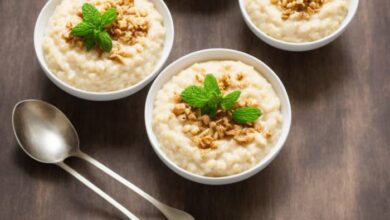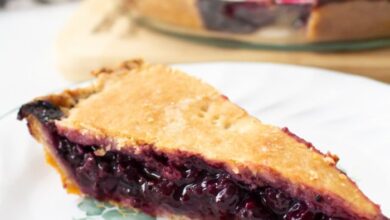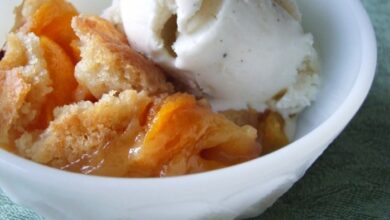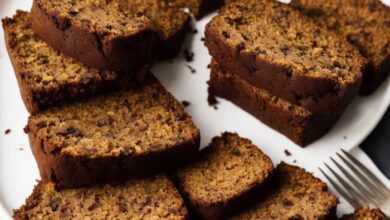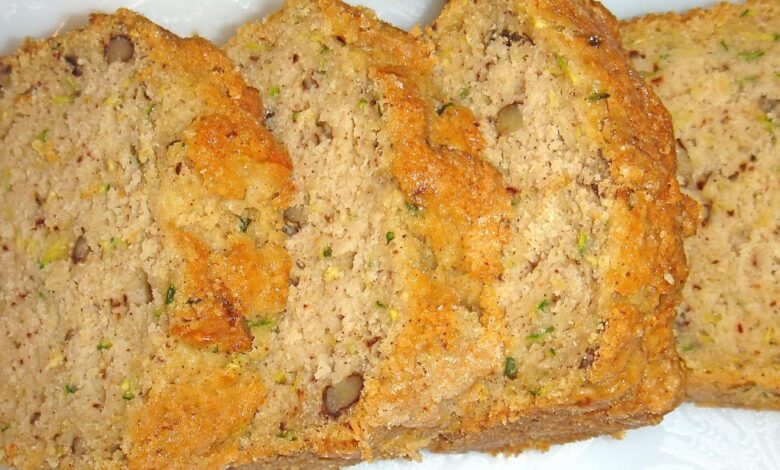
Gluten Free Zucchini Bread: A Deliciously Healthy Treat
Gluten Free Zucchini Bread: A Deliciously Healthy Treat. Who doesn’t love a slice of warm, moist zucchini bread? It’s a classic dessert that brings back memories of cozy afternoons and family gatherings. But what if you’re following a gluten-free diet?
Fear not! You can still enjoy this delightful treat without compromising your health. Gluten-free zucchini bread is a delicious and versatile alternative that offers all the flavor and texture you crave, without the gluten.
In this blog post, we’ll delve into the world of gluten-free zucchini bread, exploring its appeal, the benefits of a gluten-free diet, and the reasons why people choose this delicious alternative. We’ll also provide a comprehensive guide to ingredients, preparation, and baking techniques, along with tips for achieving the perfect texture and consistency.
Whether you’re a seasoned baker or a kitchen novice, this guide will equip you with everything you need to create a gluten-free zucchini bread that will impress your taste buds and satisfy your cravings.
Introduction to Gluten-Free Zucchini Bread
Zucchini bread is a beloved dessert that offers a delightful blend of moist texture, subtle sweetness, and a hint of spice. Its versatility allows for various flavor combinations and customizations, making it a crowd-pleasing treat for all occasions. While traditional zucchini bread recipes often contain gluten, the growing popularity of gluten-free diets has led to the emergence of delicious gluten-free alternatives.
Benefits of a Gluten-Free Diet
A gluten-free diet eliminates gluten, a protein found in wheat, barley, and rye. This dietary approach is often adopted for individuals with celiac disease, a serious autoimmune disorder triggered by gluten. For these individuals, consuming gluten can cause damage to the small intestine, leading to malabsorption and various health issues.
However, many people choose to follow a gluten-free diet for other reasons, such as managing symptoms of non-celiac gluten sensitivity, promoting digestive health, or following a specific lifestyle approach.
Reasons for Choosing Gluten-Free Zucchini Bread
There are several reasons why people choose gluten-free zucchini bread:
- Celiac Disease:Individuals with celiac disease must strictly avoid gluten to prevent health complications. Gluten-free zucchini bread provides a safe and delicious alternative to traditional recipes.
- Gluten Sensitivity:Some people experience digestive discomfort, bloating, or other symptoms after consuming gluten, even if they do not have celiac disease. Gluten-free zucchini bread allows them to enjoy this treat without experiencing these reactions.
- Health and Wellness:Many individuals choose to follow a gluten-free diet as part of a broader health and wellness strategy. This can include reducing inflammation, improving digestion, or managing weight.
- Taste and Texture:Gluten-free zucchini bread can be just as delicious and satisfying as its traditional counterpart. Advancements in gluten-free baking have resulted in recipes that deliver a moist, flavorful, and enjoyable experience.
Ingredients and Preparation
The beauty of gluten-free zucchini bread lies in its simple yet flavorful ingredients. Each component plays a crucial role in achieving the perfect texture and taste.
Gluten-Free Flour Blend
Gluten-free flour blends are the foundation of this recipe, providing structure and a light, airy texture. These blends typically include a combination of flours like rice flour, tapioca flour, potato starch, and almond flour. The specific blend you choose will affect the final texture and flavor, so it’s important to select a blend that you enjoy.
Sugar
Sugar adds sweetness and helps to create a moist crumb. It also aids in the browning process, giving the bread a beautiful golden crust. You can use granulated sugar, brown sugar, or a combination of both.
Eggs
Eggs bind the ingredients together, add richness, and contribute to the texture. They also help to create a tender crumb.
Oil
Oil adds moisture and richness to the bread, resulting in a tender crumb. You can use any neutral oil, such as vegetable oil, canola oil, or avocado oil.
Gluten-free zucchini bread is a delightful treat, especially when paired with a vibrant salsa. Speaking of vibrant, I recently stumbled upon a recipe for ex-girlfriend’s mom’s salsa fresca pico de gallo that would be perfect with the zucchini bread’s subtle sweetness.
The tangy salsa would cut through the richness of the bread, creating a beautiful balance of flavors.
Zucchini
Zucchini adds moisture and a subtle sweetness to the bread. It also contributes to the bread’s unique texture.
Spices
Cinnamon, nutmeg, and ginger are common spices used in zucchini bread. They add warmth and depth of flavor to the bread.
Baking Soda
Baking soda is a leavening agent that helps the bread rise. It reacts with the acidic ingredients, such as buttermilk or lemon juice, to create air bubbles.
Optional Ingredients
You can also add other ingredients to enhance the flavor and texture of your gluten-free zucchini bread, such as:
- Chopped nuts: Pecans, walnuts, or almonds add a crunchy texture and nutty flavor.
- Chocolate chips: For a sweet treat, add chocolate chips to the batter.
- Raisins or cranberries: These add sweetness and a chewy texture.
Preparing the Ingredients
- Grate the zucchini: Grate the zucchini finely using a box grater or food processor. Squeeze out excess moisture using a clean kitchen towel or cheesecloth. This step helps to prevent the bread from becoming too soggy.
- Measure the flour accurately: Use a kitchen scale to measure the gluten-free flour blend. This ensures consistent results.
- Preheat the oven: Preheat the oven to 350°F (175°C) before baking the bread.
- Grease and flour the loaf pan: Grease and flour a loaf pan to prevent the bread from sticking.
Recipe Variations
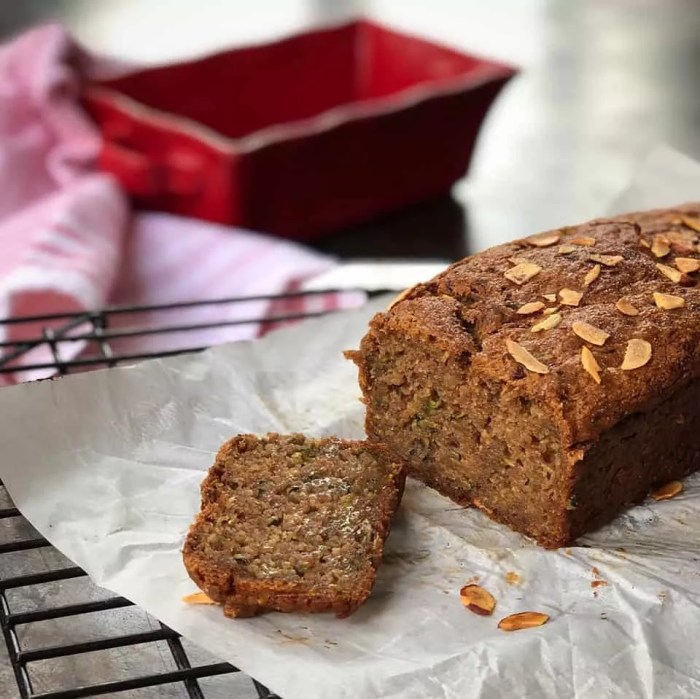
The beauty of zucchini bread lies in its versatility. You can easily adapt this recipe to suit your taste preferences and dietary needs. Let’s explore some exciting variations that will elevate your zucchini bread game.
Flavor Combinations
Experimenting with different flavors can transform your zucchini bread into a culinary masterpiece.
- Citrus Burst:Add a zest of lemon or orange to the batter for a refreshing citrus twist. A tablespoon of orange juice can also enhance the flavor.
- Spiced Delight:Incorporate warm spices like cinnamon, nutmeg, and ginger for a comforting and aromatic bread. A pinch of cardamom or cloves can add a unique depth of flavor.
- Chocolate Indulgence:Fold in chocolate chips or chunks for a decadent treat. You can also add a tablespoon of cocoa powder to the batter for a richer chocolate flavor.
- Nutty Goodness:Toasted walnuts or pecans add a delightful crunch and nutty flavor. You can also use almond flour for a subtle almond taste.
Sweetener Variations
The choice of sweetener can significantly impact the sweetness and texture of your zucchini bread.
- Honey:Honey adds a natural sweetness and a subtle floral aroma. It also contributes to a slightly moister texture.
- Maple Syrup:Maple syrup offers a rich, caramelized flavor and a touch of molasses. It can create a denser bread with a slightly chewier texture.
- Agave Nectar:Agave nectar provides a smooth sweetness with a hint of caramel. It can create a lighter and airier bread compared to honey or maple syrup.
Gluten-Free Flour Comparison
Gluten-free flours offer a wide range of options, each with its unique characteristics that influence the texture of your zucchini bread.
| Gluten-Free Flour | Texture | Characteristics |
|---|---|---|
| Rice Flour | Light and airy | Mild flavor, can be dry, often used in combination with other flours |
| Almond Flour | Dense and slightly crumbly | Nutty flavor, absorbs moisture well, can be used in high proportions |
| Coconut Flour | Dense and slightly grainy | Slightly sweet, absorbs a lot of liquid, often used in smaller proportions |
| Tapioca Flour | Chewy and slightly sticky | Neutral flavor, provides binding properties, often used in combination with other flours |
| Potato Starch | Light and fluffy | Neutral flavor, adds lightness and moisture, often used in combination with other flours |
Baking Techniques
Baking gluten-free zucchini bread requires a few extra considerations to ensure a moist and flavorful loaf. Here, we’ll explore the key techniques for mixing and baking, along with tips for achieving the perfect texture and consistency.
Mixing Techniques
The process of mixing gluten-free zucchini bread involves a few key steps to ensure proper incorporation of ingredients and a light and airy texture. * Start by whisking together dry ingredients:This ensures even distribution of the gluten-free flour blend, baking powder, and spices.
Combine wet ingredients
In a separate bowl, whisk together the oil, eggs, sugar, and vanilla extract.
Gradually add wet ingredients to dry
This helps to prevent overmixing, which can lead to a tough loaf.
Fold in zucchini
Gently fold in the grated zucchini to maintain its texture and prevent excessive moisture release.
Avoid overmixing
Overmixing can lead to a tough and dense loaf.
Baking Techniques
Baking gluten-free zucchini bread requires careful attention to temperature and baking time.* Preheat oven to 350°F (175°C):This ensures the bread bakes evenly.
Grease and flour a loaf pan
My gluten-free zucchini bread is always a hit, especially when paired with a tangy and creamy dressing. I recently discovered this absolutely fabulous Greekhouse dressing that complements the sweetness of the bread perfectly. The creamy texture and bright flavors of the dressing create a delicious contrast to the moist and slightly sweet zucchini bread.
It’s a match made in culinary heaven!
This prevents sticking and allows for easy removal.
Bake for 50-60 minutes
The exact baking time may vary depending on the size of the loaf pan and the oven.
Test for doneness
Insert a toothpick into the center of the loaf. If it comes out clean, the bread is done.
Troubleshooting Common Baking Problems
Here’s a table outlining common baking problems and solutions:| Problem | Solution ||—|—|| Dense and dry bread | Increase the amount of oil or liquid in the recipe. || Crumbly bread | Overmixing can lead to a crumbly texture. Mix ingredients just until combined.
|| Unevenly baked bread | Rotate the loaf pan halfway through the baking time. || Bread sticks to the pan | Ensure the pan is properly greased and floured. || Bread falls after baking | This can be caused by overmixing or underbaking.
Ensure the bread is baked until fully cooked. |
Gluten-free zucchini bread is a delightful treat, especially when paired with a refreshing summer soup. I recently discovered a recipe for tomato cold soup with parmesan cheese ice cream that was the perfect complement to the moist and flavorful bread.
The cool, tangy soup balanced the sweetness of the zucchini bread beautifully, creating a harmonious blend of textures and flavors.
Serving and Storage
Your gluten-free zucchini bread is ready to be enjoyed! Whether you’re serving it for a special occasion or a casual snack, there are plenty of ways to make it shine. Let’s explore some serving ideas and how to keep your bread fresh and delicious.
Serving Suggestions
There are many ways to enjoy your gluten-free zucchini bread. Here are some ideas:
- Warm from the oven: Serve warm slices with a pat of butter or a dollop of cream cheese for a classic pairing. This is especially delightful for a cozy breakfast or afternoon treat.
- Toasted: Toasted slices add a crispy texture and enhance the flavors of the bread. Enjoy with your favorite toppings like jam, honey, or nut butter.
- With a side of soup or salad: Zucchini bread pairs well with savory dishes, adding a touch of sweetness and moisture to your meal. Try it with a hearty tomato soup or a light green salad.
- In a dessert platter: Cut the bread into attractive shapes and arrange it alongside other baked goods, fresh fruit, and cheese for a beautiful and delicious spread.
- As a base for other desserts: Crumble the bread and use it as a base for bread pudding, crumbles, or even zucchini bread ice cream.
Storage Tips
Proper storage is key to preserving the freshness and texture of your gluten-free zucchini bread.
- Room temperature: For optimal flavor and texture, store your bread at room temperature for up to 3 days. Wrap it tightly in plastic wrap or aluminum foil to prevent drying.
- Refrigerator: If you need to store the bread for longer, you can keep it in the refrigerator for up to a week. Wrap it tightly in plastic wrap or aluminum foil to prevent moisture loss.
- Freezing: To extend the shelf life, you can freeze the bread for up to 3 months. Wrap it tightly in plastic wrap and then place it in a freezer-safe bag or container. To thaw, simply remove the bread from the freezer and let it thaw at room temperature.
You can also reheat it in the oven or toaster.
Presentation Ideas, Gluten free zucchini bread
A little effort in presentation can elevate your gluten-free zucchini bread from ordinary to extraordinary.
- Glaze or icing: A simple glaze or icing adds a touch of sweetness and visual appeal. You can use a basic lemon glaze or a cream cheese frosting for a more decadent treat.
- Toppings: Enhance the flavors and textures of your bread with various toppings. Sprinkle chopped nuts, dried fruit, or chocolate chips on top before baking for a delightful crunch. You can also add a dollop of whipped cream or a drizzle of honey for extra sweetness.
- Serving platter: Choose a visually appealing serving platter to showcase your bread. A wooden cutting board or a ceramic plate with a rustic design complements the natural beauty of the zucchini bread.
Health Considerations
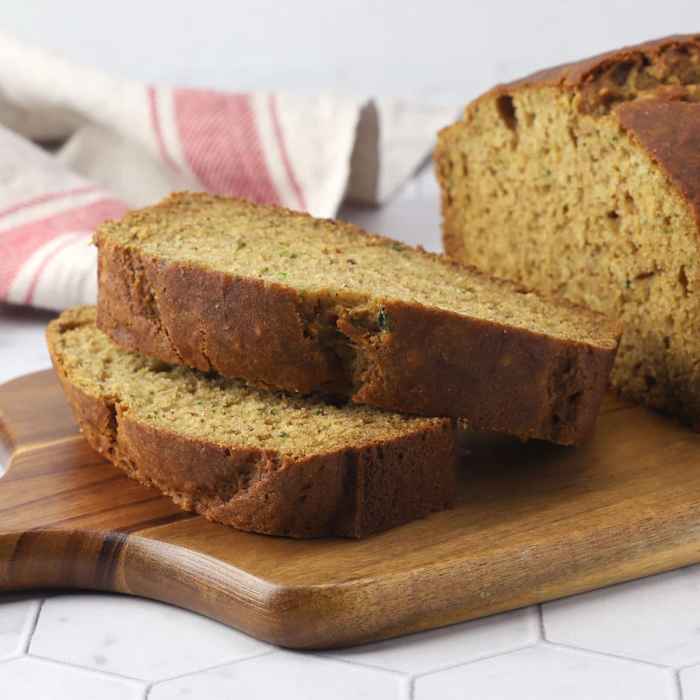
Zucchini bread, whether gluten-free or traditional, offers a delicious and nutritious way to enjoy this summer squash. This section explores the nutritional benefits of zucchini bread, provides tips for making it even healthier, and compares the nutritional content of gluten-free and traditional versions.
Nutritional Benefits of Zucchini Bread
Zucchini bread is a good source of several essential nutrients, including vitamins, minerals, and fiber. Zucchini itself is low in calories and rich in vitamins A and C, as well as potassium and manganese. These nutrients contribute to various health benefits, such as boosting the immune system, promoting healthy skin, and supporting bone health.
Tips for Making Zucchini Bread Even Healthier
There are several ways to make zucchini bread even healthier without sacrificing flavor.
- Use whole-wheat flour or a gluten-free blend that includes whole grains for added fiber and nutrients.
- Reduce the amount of sugar by using honey, maple syrup, or a sugar substitute.
- Add additional ingredients for extra nutritional value, such as chopped nuts, seeds, or dried fruit.
- Use unsweetened applesauce or mashed banana as a substitute for some of the oil or butter.
Nutritional Content of Gluten-Free and Traditional Zucchini Bread
The nutritional content of zucchini bread can vary depending on the recipe and ingredients used. However, in general, gluten-free zucchini bread tends to be slightly lower in calories and carbohydrates than traditional zucchini bread. This is because gluten-free flours often have a lower carbohydrate content than wheat flour.
Gluten-free zucchini bread may also be slightly higher in fiber due to the inclusion of additional ingredients like flaxseed or psyllium husk.
It is important to note that the nutritional content of zucchini bread can vary significantly depending on the specific recipe and ingredients used. Always check the nutritional information on the product label or use a nutrition calculator to determine the exact nutritional content of your zucchini bread.
Gluten-Free Baking Resources: Gluten Free Zucchini Bread
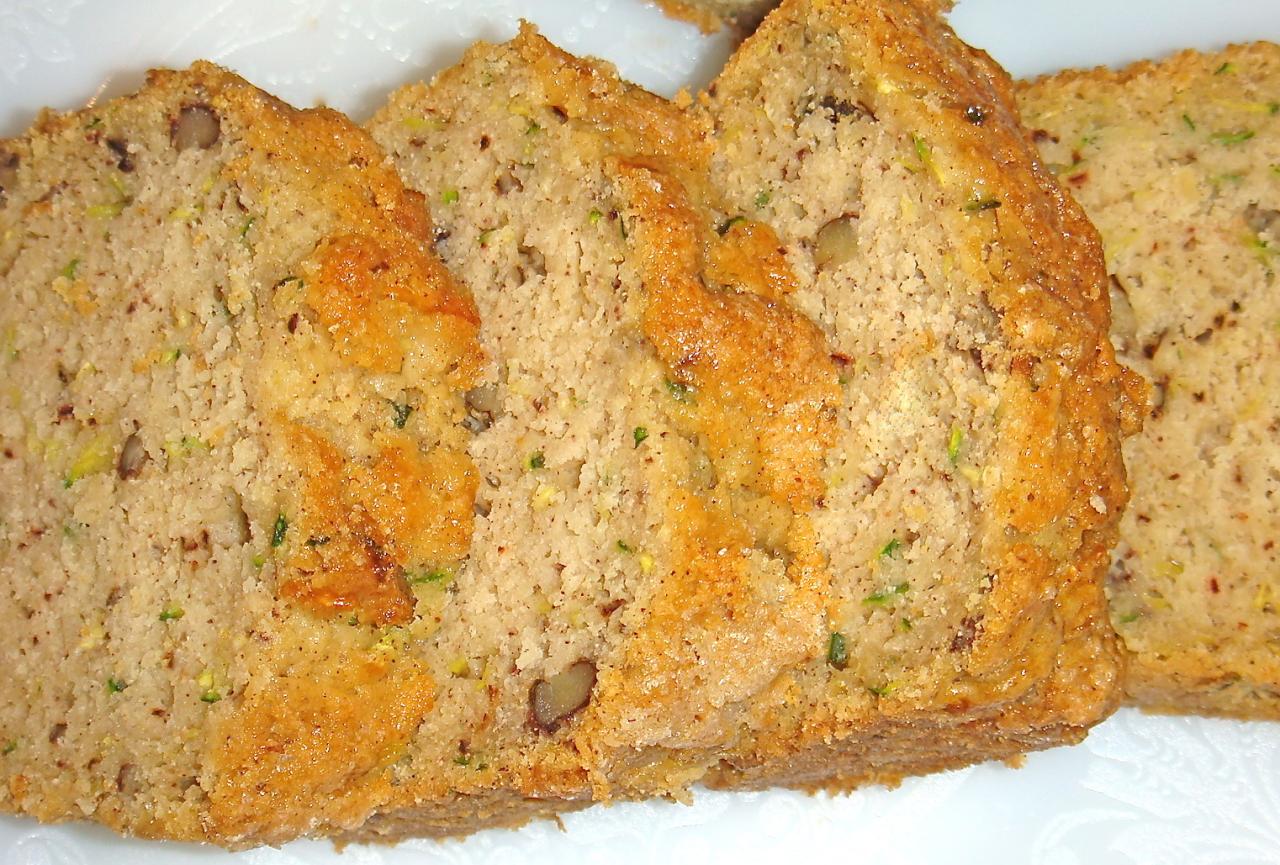
Navigating the world of gluten-free baking can feel overwhelming at first. But fear not! With the right resources and knowledge, you can create delicious and satisfying gluten-free treats. This section explores some reliable sources for gluten-free baking information, tips for finding the right ingredients, and the importance of choosing certified gluten-free products.
Finding Gluten-Free Ingredients and Products
Finding gluten-free ingredients and products is becoming increasingly easier, with a growing market catering to dietary restrictions.
- Specialty Gluten-Free Stores:These stores offer a wide selection of gluten-free flours, baking mixes, and other essentials. They are a great place to discover unique brands and products that might not be readily available in mainstream supermarkets.
- Online Retailers:Many online retailers specialize in gluten-free products, providing a convenient and extensive selection. You can often find bulk discounts and unique items that might not be available locally.
- Mainstream Supermarkets:Most supermarkets now have a dedicated gluten-free section, with a growing range of products. Look for brands with a “Gluten-Free” label and check the ingredient list carefully.
- Local Farmers Markets:Some farmers markets have vendors selling gluten-free baked goods or ingredients. This is a great way to support local businesses and find fresh, artisanal products.
Importance of Certified Gluten-Free Ingredients
When baking gluten-free, using certified gluten-free ingredients is crucial for ensuring a truly gluten-free product and minimizing the risk of cross-contamination.
“Certified gluten-free” means that a product has been tested and verified to contain less than 20 parts per million (ppm) of gluten.
- Cross-Contamination:Gluten can easily contaminate other ingredients and products during processing, handling, or storage. Using certified gluten-free ingredients minimizes the risk of accidental gluten ingestion.
- Health Concerns:For individuals with celiac disease or gluten sensitivity, even small amounts of gluten can trigger severe reactions, including gastrointestinal distress, headaches, and fatigue. Certified gluten-free products ensure a safe and healthy option.
- Quality and Consistency:Certified gluten-free products undergo rigorous testing to ensure consistent quality and gluten levels. This helps you confidently bake with the assurance of a truly gluten-free product.

